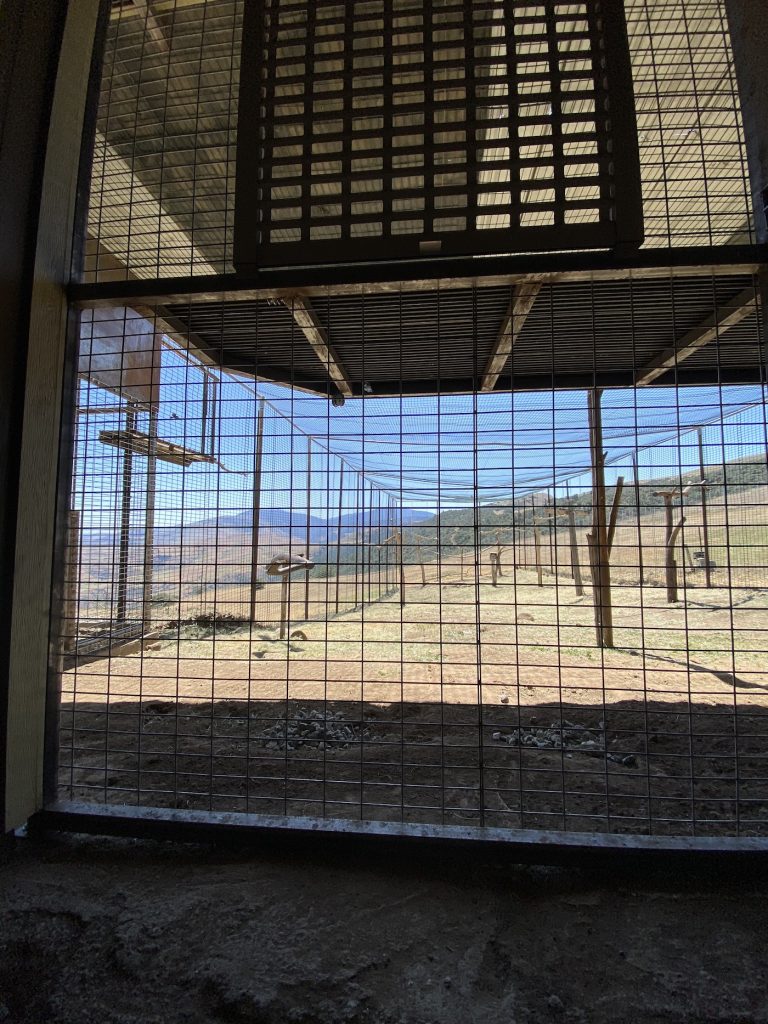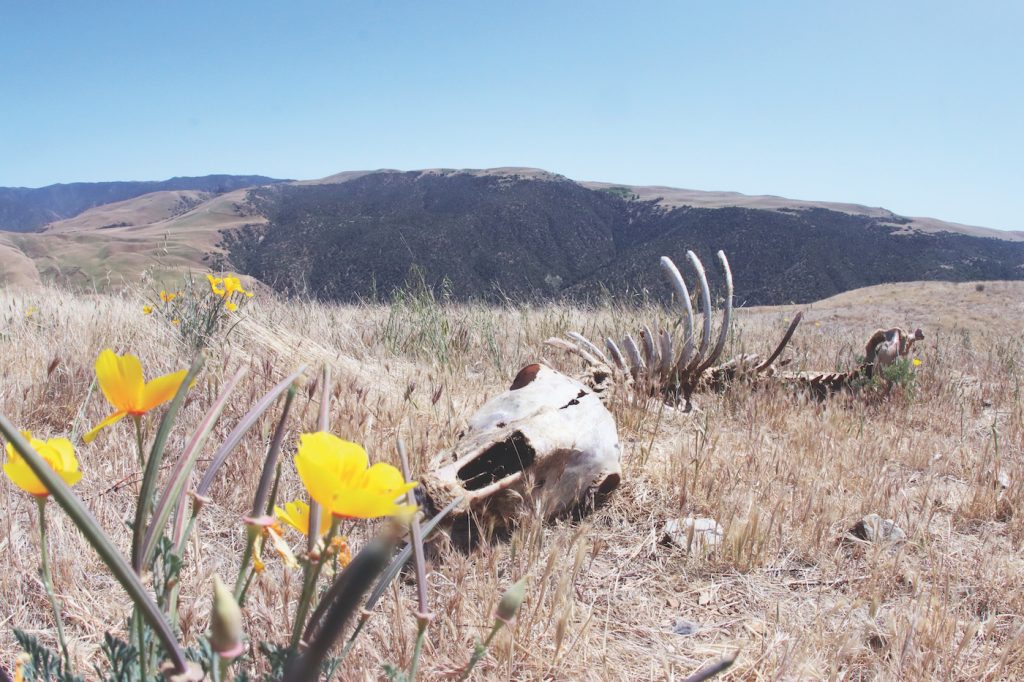Bitter Creek Chronicles: California Condors Put on a Show

There wasn’t much going on at the Bitter Creek National Wildlife Refuge (NWF). I was laying in the grassy, rolling hills of this California Condor sanctuary, and I was waiting for something to stir. It was mid-afternoon and thermal updrafts were just beginning to waft skyward when a solitary condor rose above the refuge like a fighter jet off an aircraft carrier.

I sat straight up, holding my 300mm lens in my lap, thoroughly thrilled to see North America’s largest flying land bird soaring above, and quickly joined by another condor. They circled overhead making several passes, their pinkish/orange heads standing out against their impressive velvety black nine-foot-plus wingspans, their wingtips extending outward like giant fingers on an outstretched hand.
Over the years, release sites like Bitter Creek have expanded throughout the condor’s historic range. There are currently five other sites besides Bitter Creek that serve as sanctuaries and release stations. Those include nearby Hopper Mountain, Ventana Wilderness along the Big Sur Coast, Pinnacles National Park, Grand Canyon National Park, and Baja California. The wild population is augmented with captive-bred birds. Their flight pens help garner condor behavior. The recovery program has been doing this since the early 1990s. And although the wild population is growing and old territories are reestablished, it’s getting increasingly more challenging to track their whereabouts. Condors average around 150 miles per day in the air.
“It’s a sign of their recovery that they are expanding,” said Arianna Punzalan, supervisory wildlife biologist for the USFWS, who has worked with condors since 2012. “It’s a good thing and a bad thing because how do we continue to monitor these birds?”
Nestled within the transverse ranges, between the Carrizo Plain National Monument and the Sespe Wilderness, Bitter Creek NWF is a haven and another launching pad for releasing endangered California Condors.
Orchard Draw
After walking beneath an old, green-leafed apple orchard on what was then part of the Hudson Ranch, we hiked a short distance north to an exposed ridgeline overlooking the open book-shaped Orchard Draw on Bitter Creek. The narrow, nondescript canyon was choked in scrubby chaparral, but at the bottom of the draw was a gritty sandstone monolith.
For a good 30 minutes there wasn’t any activity, and then finally there was some movement. The sandstone rock outcropping possessed a few gritty cavities and emerging from the shadows of a shadowy alcove was an adult male condor, known as Condor 328. There was one egg in the cave and the doting parents swap out on parenting duties, which means they share responsibilities on incubating their egg. The female is known as Condor 216. They’ve been together for 10 years.
Condors produce a chick every other year. The chick fledges after six months in the cave nest. Condors are monogamous, and if the pair survives, they will return to the same nest site to give it another go. Currently, there are 300 California condors in the wild.
“I got super lucky and saw the egg the day after it was laid,” said Laura McMahon, wildlife biologist for the USFWS. “It’s pretty easy spotting a nest when a condor is standing in front of it.”
Pit Trap
California condors are Ice Age birds. Fossil records indicate they once soared all over North America. However, as megafauna died off, so too did the condor’s range. Fast forward to the 1800s, their range had shrunk to the point where California became their last stronghold, but it was shrinking quickly. Predators were killed off, either shot or poisoned. Egg collecting and selling condor feathers were common practices.
By the 1980s there were only 22 condors left in the wild. It was now or never for these iconic raptors. Captive breeding was the only option, so an aggressive plan was put in motion to save these impressive scavengers.

There was one thing that stood out on the barren knoll overlooking the southwest portion of Bitter Creek. It was an old horse carcass lying amongst some vibrant California poppies. It marked the site of an ambitious effort to capture the last remaining California condors. Wildlife biologists Peter Bloom and Dave Clendenen created their pit trap in 1987.
The two biologists dug a shallow grave partially burying themselves with organic debris and a stillborn calf carcass lying across the top. Sometimes the two would conceal themselves from sunrise to sunset, waiting patiently for one of the last remaining condors to land on top of them. All they would have with them was some food, water, and a pee bottle. When a condor would land, they would grab it. Stories of black widows and rattlesnakes visiting the pit trap while the two biologists hid beneath were part of Pit Trap lore, but anything to save these exemplary birds.
Getting the Lead Out
Besides habitat loss, the biggest challenge for the survival of the California Condor is use of lead bullets in their habitat. There are alternatives out there for hunters to use, but change can be slow.
Condors are scavengers. They are the cleaners of the forest. With incredible eyesight condors locate carcasses and feed mightily. Lead fragments are soft and break down easily within the condor’s food source. However, lead fragments get in the condors’ bloodstream attacking their nervous system.
“If we remove lead from the environment condors can be self-sustaining,” said Punzalan. “Change is hard, but lead is more of a challenge. Partners are invaluable about getting the word out. Hopefully in my lifetime the condor will be delisted.”







